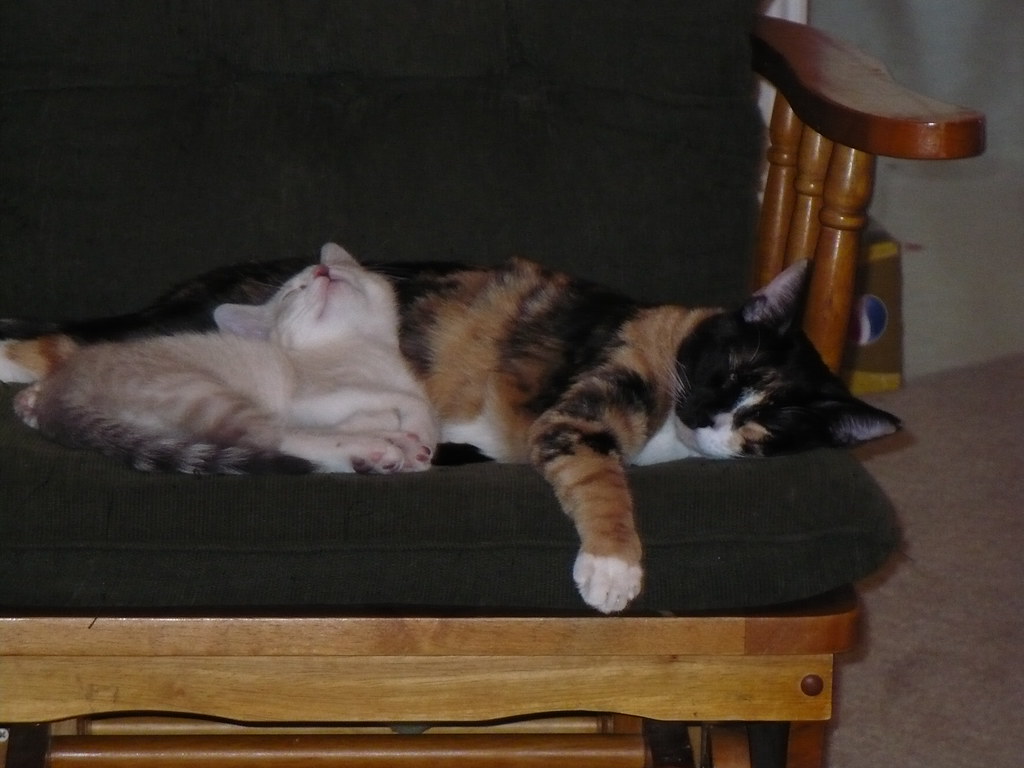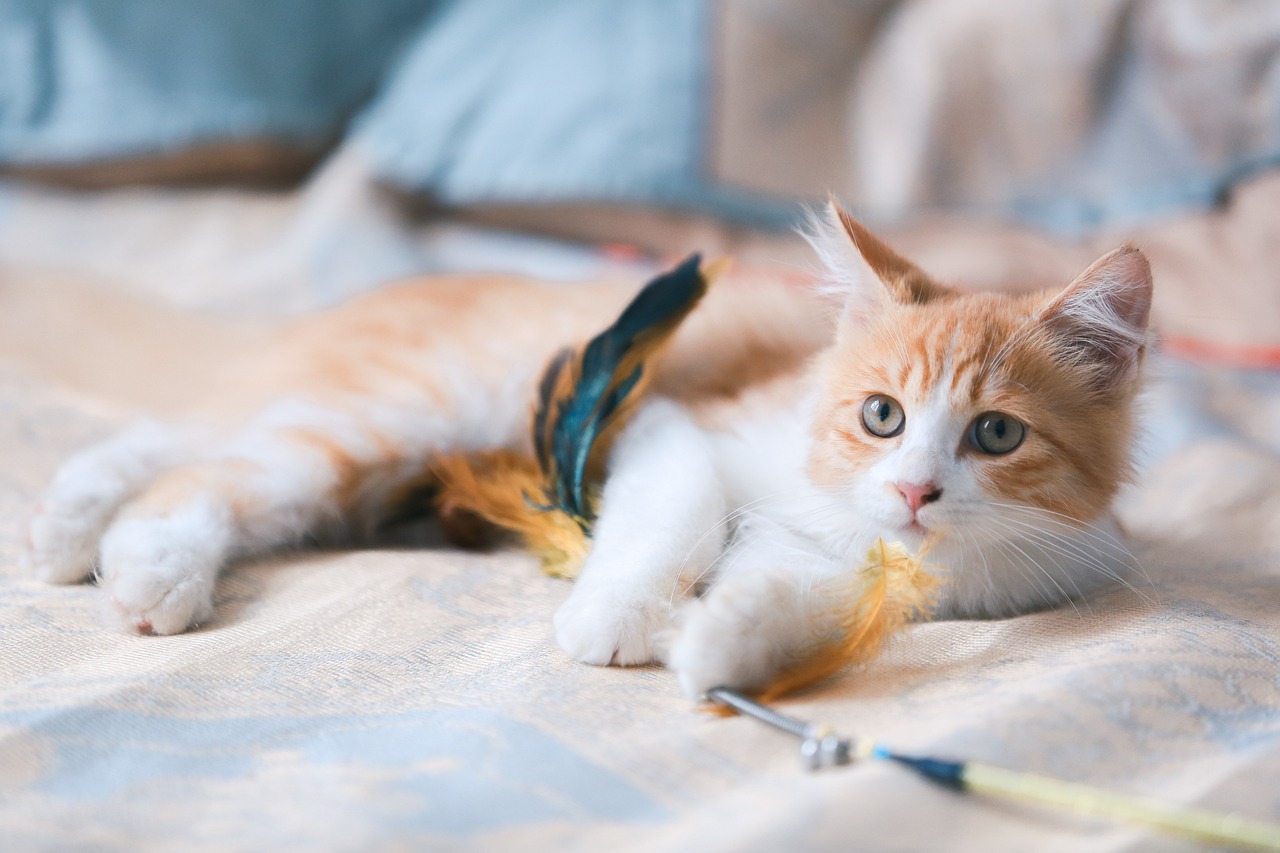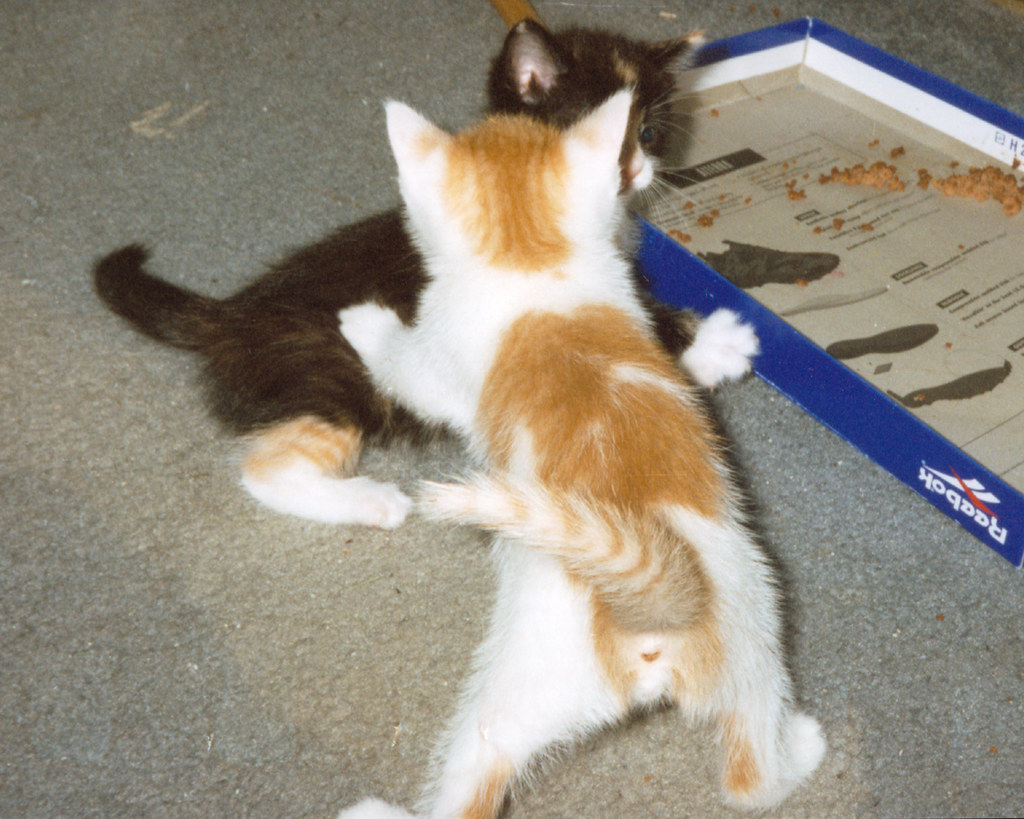Signs to distinguish play from fighting
Understanding the difference between cats playing and fighting can be quite tricky. The post Are My Cats Playing or Fighting? Signs & Intervention helps cat owners by explaining the key signs to look for to tell whether their cats are just having fun or are in a serious brawl. This is important because knowing the difference can help keep your cats safe and your home peaceful.
Body Language
One of the easiest ways to tell if your cats are playing or fighting is to watch their body language. When cats are playing, their movements are usually more relaxed. Their bodies are loose and they might even take turns chasing each other, pouncing, and then pausing to rest. Their tails are often up and moving in a soft, playful way. In contrast, a cat that’s about to fight will have a stiff body and their ears might be flattened against their head. Their fur may also puff up to make them look bigger and more intimidating.
Vocalizations
The sounds your cats make can also give you clues. Playful cats usually make softer noises like chirping or light meowing. These sounds can be a way for them to communicate their excitement in a non-threatening manner. However, when cats are fighting, the sounds will be much louder and more aggressive. You’ll hear growling, hissing, and maybe even yowling, which are strong signs that a fight is happening.
Facial Expressions
Believe it or not, cats have “play faces”! When they’re having fun, their eyes are usually more relaxed and their whiskers are in a calm position. They might even look a bit mischievous. But during a fight, their eyes will be wide, and their pupils might be dilated. Their whiskers will be pointed forward, and you might see their teeth bared as well.
“Cats can communicate a lot through their eyes and whiskers. Paying attention to these small intricacies can often tell you what your cat is feeling.”
Interaction and Engagement
How your cats interact with each other is another big hint. When they’re playing, they usually take turns. One will chase, then the other will chase. They might also stop and embark frequently, giving each other breaks. In a fight, there’s usually a lot more chasing, and it doesn’t stop. One cat might try to get away, and the other will keep coming. There’s no turn-taking in a real fight, just a lot of frantic movement.
Using Claws and Teeth
Playing cats might bat at each other with their paws but usually without extending their claws. They might also “play bite,” which means they’ll pretend to bite but won’t actually close their jaws fully. Fighting cats, on the other hand, will use their claws and teeth with the intent to cause harm. If you see scratches or bite marks on your cats, it’s a clear sign that what happened was not just play.
Understanding these signs will help you know when to step in and when to just let your cats have their fun. By recognizing the differences between play and fighting, you can intervene appropriately and ensure your cats stay happy and healthy.
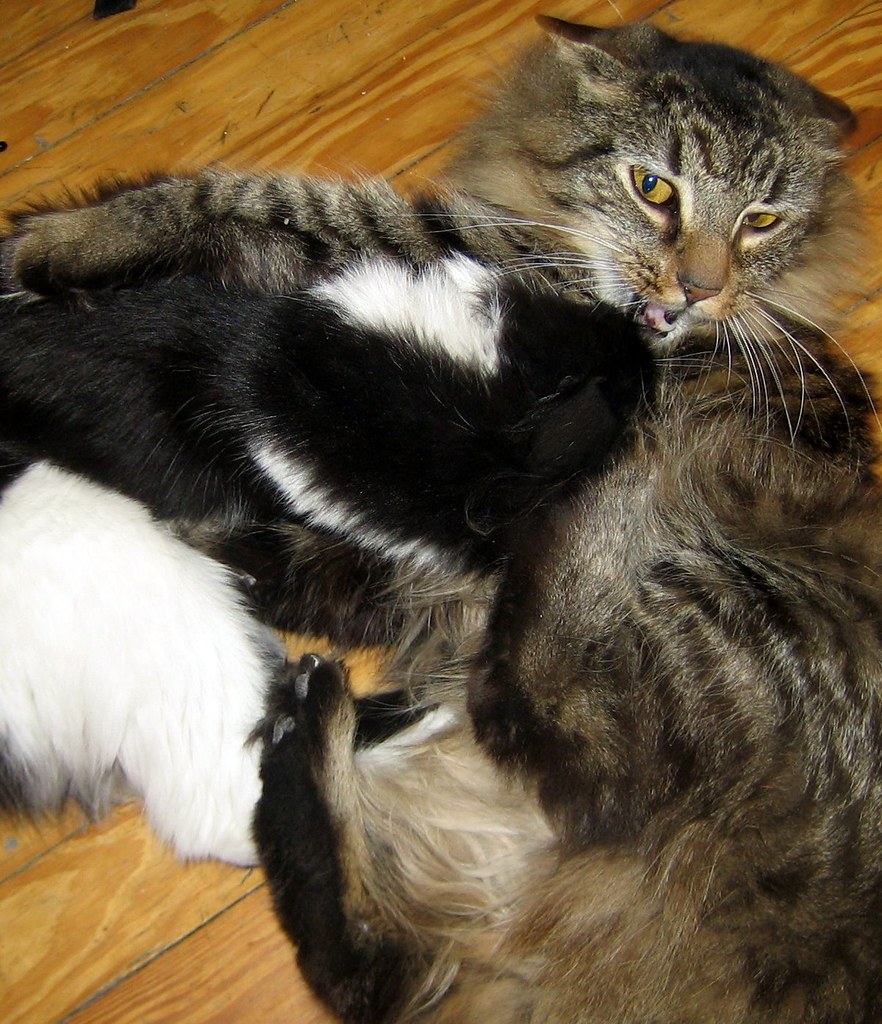
Tips for safe intervention
When it comes to breaking up a cat fight, it’s all about safety—for you and your feline pals. Directly intervening with your hands or body is a big no-no. Cats can accidentally scratch or bite you, and it’s better to avoid any injuries. Here are ways you can safely break up a cat fight:
- Loud Noises: Make a loud sound like clapping your hands or banging pots and pans. This can startle the cats enough to stop the fight momentarily.
- Throw a Blanket: Toss a blanket or large towel over the fighting cats. This often disorients them long enough for you to safely separate them.
- Use a Barrier: Gently push the cats apart with an object like a broom or piece of cardboard. This keeps your hands safe while still effectively ending the fight.
Once you’ve managed to separate them, it’s essential to keep them apart for a while to let them cool down. Place each cat in a separate room with some food, water, and their litter box. This way, they can calm down without the risk of another immediate confrontation.
Precautions to Take When Intervening
It’s intrinsic to practice caution when breaking up a cat fight. Even a well-meaning intervention can go wrong if you’re not careful. Here are some precautions you should take:
- Avoid Direct Contact: Always avoid harnessing your hands to separate the cats. Use objects like brooms, blankets, or even large boards to create a barrier between them.
- Protective Gear: If you suspect that you have no other option but to intervene physically, make sure to wear gloves and long sleeves. This will help protect you from scratches and bites.
After the fight has been broken up, it’s equally vital to assess both cats for injuries. Smaller wounds like scratches might not seem like a big deal immediately but can evolve into more severe issues like abscesses if left untreated.
Tips for Safe Intervention
To minimize the risks, here are some tried-and-true tips:
- Stay Calm: Just like people, cats can pick up on your emotions. Staying calm can help de-escalate the situation.
- Make Noise: Leverage a loud noise to startle the cats and interrupt the fight. Be cautious not to scare them too much, though, where they might lash out.
- Use Barriers: Employ shields like boards, brooms, or even large pieces of cardboard to separate the cats without getting too close.
- Throw a Blanket: Throwing a blanket or towel over them can disrupt the fighting and give you a safe opportunity to separate them.
- Check for Injuries: Post-fight, scrutinize both cats for any scratches, bites, or other injuries that may need veterinary attention.
- Keep Them Apart: After a fight, separate the cats into different rooms to allow them to calm down and prevent immediate re-aggressions.
- Consult a Vet: If you observe recurring fights, consider consulting a veterinarian or a pet behaviorist to understand the root cause and seek professional guidance.
Following these intervention techniques will help you to safely break up cat fights, reducing the risk of injury for both you and your pets. Keep a few of these items like a broom or sturdy piece of cardboard handy around the house if you’re dealing with frequent cat fights, so you can quickly and safely intervene.
| Intervention Technique | Intricacies |
|---|---|
| Loud Noises | Clap hands or bang pans to startle the cats. |
| Throw a Blanket | Leverage a blanket or large towel to disorient the cats. |
| Leverage a Barrier | Employ objects like brooms or boards to separate the cats. |
| Avoid Direct Contact | Never use hands to break up the fight. |
| Protective Gear | Wear gloves and long sleeves if physical intervention is needed. |
| Stay Calm | Keep your cool to avoid escalating the fight. |
Harnessing these safe intervention techniques will make it easier to manage your cats’ conflicts, ensuring that everyone stays safe and peaceful in your home.
Techniques to encourage safe play
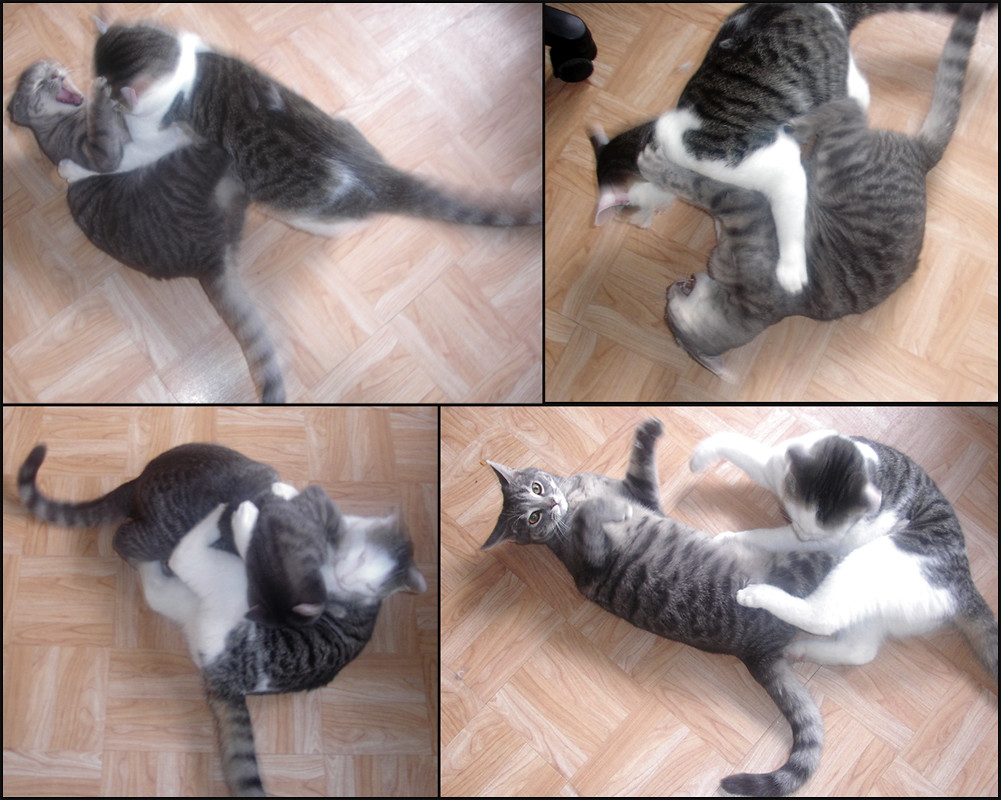
Encouraging safe play among your cats can help them release energy positively and reduce the likelihood of aggressive behavior. Below are some tips to encourage safe play:
- Scheduled Playtimes: Create a routine by setting aside specific times each day for play. Consistent play schedules help cats know when it’s time to play and when it’s time to relax.
- Interactive Toys: Leverage various interactive toys like feather wands, balls, and laser pointers. These mimic prey and engage your cat’s hunting instincts, providing both mental and physical stimulation.
- Rotate Toys: Introducing new toys frequently prevents boredom. By rotating toys, you’ll keep playtime interesting and reduce the chance of your cats becoming bored and potentially aggressive.
- Designated Play Areas: Have specific areas in your home for play. Provide scratching posts, cat trees, and hiding spots. This helps establish boundaries and makes it clear where it’s appropriate for them to play.
- Personal Space: Ensure each cat has its own space, whether it’s a cozy bed, a specific scratching post, or a feeding station. Personal space reduces competition for resources and keeps tensions low.
- Turn-Taking Games: Engage in games that encourage taking turns, like chase games where you alternate between cats. This promotes fairness and helps manage energy levels.
- Positive Reinforcement: Reward your cats with treats or affectionate attention for good behavior during play. Positive reinforcement helps build a positive association with gentle, safe play.
- Supervise Play: Always monitor playtime to ensure it doesn’t escalate into aggression. If you observe signs of overstimulation or aggressive behavior, intervene and redirect their attention.
By implementing these techniques, you can create a positive and safe environment for your cats to play, ensuring they remain happy and healthy. For more tips and information, read the full post at Are My Cats Playing or Fighting? Signs & Intervention.
Leverage these methods and resources to create a playful and harmonious household for your cats! They’ll thank you with less tension and more purrs.
